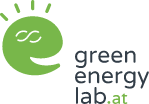My town is my energy cell
In so-called energy cells, the electricity generated locally - in settlements, villages, districts or neighborhoods - is to be consumed or stored locally with the help of appropriate technologies. The researchers already have initial results to show.

© Daniel Bell
17 March 2022 – The organizational form of energy grids is set to change fundamentally in the future. In so-called energy cells, the electricity generated locally – in settlements, villages, districts or neighborhoods – is to be consumed or stored locally with the help of appropriate technologies. Surpluses, on the other hand, are released to neighboring cells. The system is not only intended to promote the use of renewable forms of energy locally, but also to ensure stable and fail-safe grids.
However, there is still a long way to go before this approach can be implemented on a large scale. A wide variety of technologies must be able to interact so that, for example, electrically chargeable heat storage systems can be activated in households when there is a large supply of solar power. Intelligent switching and billing technologies are needed, as well as the willingness of citizens to connect to such network units and thus allow external access to part of the building technology.
In the R2EC project, which is supported by the EU’s Era-Net program, research institutions and companies in Norway, Belgium and Austria are working together to pave the way towards a new electricity economy. Energy cells are simulated on the basis of real consumption data and prototype technology networks are tested on a laboratory scale.
An energy cell could be the size of a city district or a small village. The project is expected to involve up to 200 single-family homes.
Different optimizations
“We started with the current state of the art in the project countries and used national and EU roadmaps to estimate what future scenarios could look like – for example, in terms of the penetration of photovoltaics or intelligent control and storage technology by 2030,” says project manager Karthik Bhat from UAS Technikum Wien, describing the approach.
The user data on the type, extent and distribution of electricity demand comes from actual, current practice. In addition to the laboratory data on possible technology configurations and interfaces, social science studies are also being conducted to ascertain user and consumer behavior as well as a general willingness to participate in energy cells.
“All of this has helped us to create the most comprehensive simulation architecture possible,” emphasizes Bhat. This made it possible to run through various scenarios and business models, each dedicated to different optimizations – such as the use of renewable energy, high grid stability or other economic, technical or social objectives.
The initial results of the simulations showed a strong increase in individual self-consumption (almost 30 %) and also in the self-consumption of the entire energy cell (approx. 3 % increase).
One of the aims of the project is also to develop an implementation guide. “We want to offer guidelines for the implementation of energy cells, in which we discuss optimal technologies, the best mix of consumers and storage systems or the locally optimal proportion of renewable energy, for example,” explains Bhat. The project runs until October 2022. In a follow-up project, exemplary implementation in a pilot region would also be possible.
You can find more information about the R2EC – Regional Renewable Energy Cells project here.
